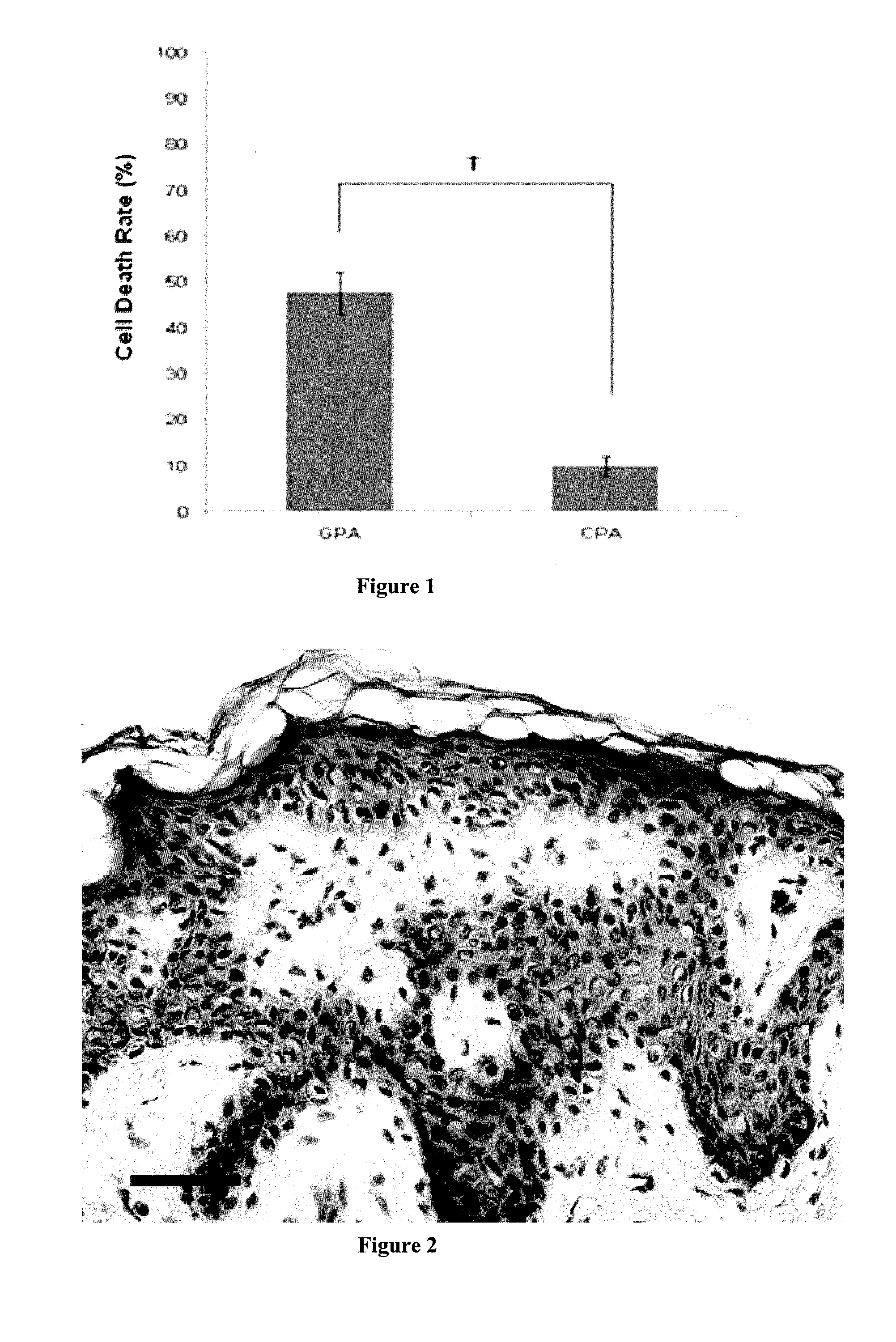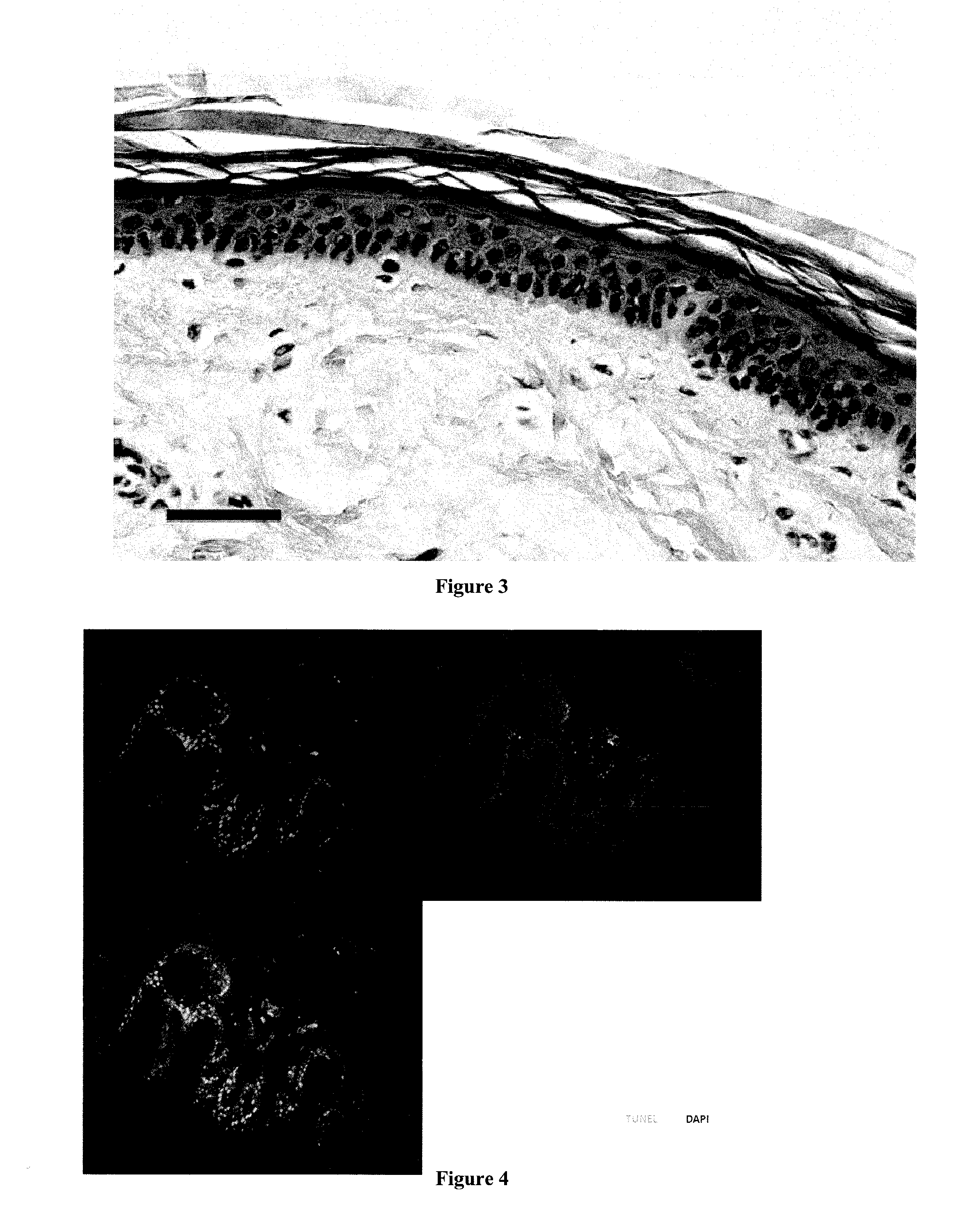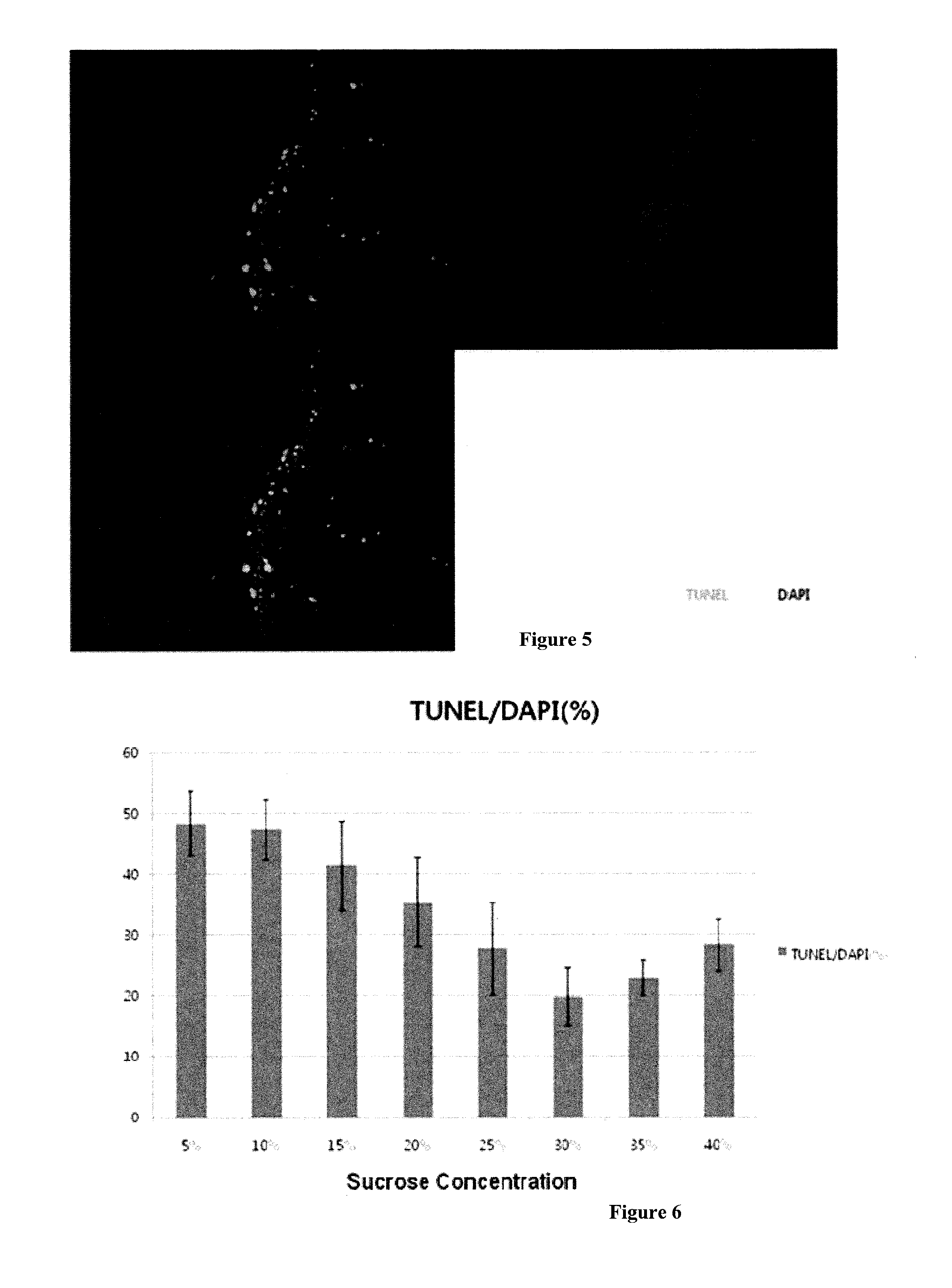Method Of Processing Allograft Skin For Transplantation, And Cryopreserved Allograft Skin Produced Thereby
a technology of allograft skin and cryopreserved allograft, which is applied in the field of processing allograft skin for transplantation and cryopreserved allograft skin produced thereby, can solve the problems of increasing patient pain, skin tissue may be obtained, and the harvesting region can leave a new scar, so as to increase the success rate of acellular dermis grafting, the effect of reducing the risk of infection
- Summary
- Abstract
- Description
- Claims
- Application Information
AI Technical Summary
Benefits of technology
Problems solved by technology
Method used
Image
Examples
example
[0027]Cryopreserved skin was prepared with pig skin according to the following steps.
[0028](1) Pig skin was washed with saline solution.
[0029](2) The pig skin was cut at the size of 5×10 cm2.
[0030](3) Dimethyl sulfoxide (Sigma, USA), DMEM (Gibco, USA) and fetal bovine serum (Gibco, USA) were mixed in the weight ratio of 1:4:5.
[0031](4) Sucrose was added to the solution of step (3) as the final concentration of 30 wt % and dissolved to obtain a cryoprotectant.
[0032](5) The pig skin of step (2) was immersed in the cryoprotectant of step (4).
[0033](6) A low temperature bath (P-039, CoreTech, Korea) was set at 4° C.
[0034](7) The pig skin of step (5) was put in the 4° C. low temperature bath, and then the cryoprotectant was penetrated into the pig skin for 12 hours.
[0035](8) The penetration-completed pig skin and 50 ml of the cryoprotectant were put in a polyamide bag (CryoBag™, Origen, USA).
[0036](9) A controlled rate freezer was prepared.
[0037](10) The polyamide bag of step (8) was put...
experimental example 1
[0044]The pig skins prepared according to the above Example and Comparative Example were analyzed by TUNEL (terminal deoxynucleotidyl transferase dUTP nick end labeling) assay. TUNEL assay was carried out by using an In Situ Cell Death Detection Kit, Fluorescein (Roche, Germany) according to the manufacturer's instructions. The results of the cell death rate are represented in FIG. 1. (The results are a mean of 10 samples.)
[0045]Pictures of the skins of the Example and Comparative Example were taken with a microscope (Olympus BX51), and the results are shown in FIGS. 2, 3, 4 and 5.
[0046]As can be seen from FIG. 1, the cell death rate in the Example is 4-5 times lower than that of the Comparative Example.
[0047]In addition, from the microscope photographs of FIGS. 2, 3, 4 and 5, it can be seen that cell death in the skin tissue in the Example is clearly smaller than that in the Comparative Example.
[0048]That is, the method according to the present invention shows higher cell viability...
experimental example 2
[0049]To investigate the change of the cell death rate according to the difference of sucrose concentration, the cryopreserved allograft skin was prepared by the same method as in the Example except that the sucrose concentration in the cryoprotectant was 5, 10, 15, 20, 25, 30, 35 and 40 wt %, and it was then analyzed by TUNEL assay. TUNEL assay was carried out by using an In Situ Cell Death Detection Kit, Fluorescein (Roche, Germany) according to the manufacturer's instructions, and 4′,6-diamidino-2-phenylindole (DAPI) was used as a fluorescent marker. The results of cell death rate are shown in the following Table 1, and represented in FIG. 6 as a graph.
TABLE 1Sucrose Conc.n5 wt %10 wt %15 wt %20 wt %25 wt %30 wt %35 wt %40 wt %14549313523202536236552221282310333645747226439234143956572312112826541416668205212066526254319203013AVE4847413528202328SD131218181912710SE5.2514554.917097.3786487.4416257.5748124.7445882.8915594.284987(Unit of cell death rate: %)
[0050]As can be seen from T...
PUM
 Login to View More
Login to View More Abstract
Description
Claims
Application Information
 Login to View More
Login to View More - R&D
- Intellectual Property
- Life Sciences
- Materials
- Tech Scout
- Unparalleled Data Quality
- Higher Quality Content
- 60% Fewer Hallucinations
Browse by: Latest US Patents, China's latest patents, Technical Efficacy Thesaurus, Application Domain, Technology Topic, Popular Technical Reports.
© 2025 PatSnap. All rights reserved.Legal|Privacy policy|Modern Slavery Act Transparency Statement|Sitemap|About US| Contact US: help@patsnap.com



